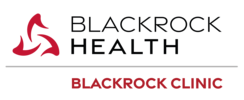The specimen transportation
system is to ensure the timely arrival of specimens in the optimal condition to
correct destination and in a manner that does not pose a threat to the health
and safety of anyone coming in contact with the sample and in compliance with
regulations.
The transport of samples to
the laboratory may be undertaken by phlebotomists, medical staff, nursing staff,
administration staff, GPs, patients themselves, courier (road and air), rail system,
post, laboratory staff and hospital attendants. Special specimen handling
requirements, if necessary for individual tests (such as transport on ice), may
be listed in the specimen requirements appendices.
10.2 Specimen Packaging System
The Specimen Packaging
system consists of three layers as follows:
1. Primary receptacle: a labelled primary leak proof
receptacle containing the specimen.
2. Secondary receptacle: a secondary sealable
biohazard bag to enclose and protect the primary receptacle(s). A sufficiently
absorbent material must be used to absorb the contents of the primary
receptacles.
3. Tertiary/outer transport package: the secondary
receptacle is placed in an outer transport container that protects it and its
contents from external influences such as physical damage while in transport. These
conform to P650, from current ADR regulations. Each package should be marked with “UN 3373”
in a diamond and the words“Biological Substance Category B” in letters at least
6 mm high adjacent to the diamond.
Note – once material is packaged in accordance with P650 no other
requirements of ADR apply.
ADR refers to: The European Agreement concerning the International
Carriage of Dangerous Goods by Road.
Further details for
infectious agents UN 2814 or samples requiring frozen transport on dry ice may
be obtained from the Pathology department.
10.3 Transport within the hospital
Specimens are presented in
their original primary receptacle. This is then placed in a sealable biohazard
bag (secondary receptacle), which has a pouch for a request form.
The biohazard bag is
subsequently placed in an opaque plastic carrier unit (designed to hold several
biohazard bags) for transportation to the laboratory.
If appropriate, the
pneumatic tube system may be used within the hospital. Follow instructions
provided at the pneumatic tube station.
Some samples are unsuitable
for transport in the Pneumatic Tube System:
·
Do not send samples for Histology or Cytology in pneumatic chute
·
Do not send Bone Marrow aspirates or slides, CSFs, Pleural Fluids, or
other samples particularly difficult to repeat in pneumatic chute
·
Do not send blood gas samples in pneumatic chute
·
Do not send samples on ice in pneumatic chute
·
Do not send blood products in pneumatic chute
·
Do not send samples that are suspect VHF Virus samples, e.g., Ebola, in
pneumatic chute
Histology Specimen
Transport:
Specimens for Histology
which may require a large leak proof primary receptacle are placed in a
sealable biohazard bag and transported to the laboratory either in designated
carrier units or transport trolley as appropriate.
10.4 Transport from Blackrock Clinic
The transport of all
hazardous materials by road is governed by the ADR regulations. There are 2 categories, A & B. Category A
covers UN 2814 – Infectious Substances Affecting Humans and Category B covers UN
3373 – Diagnostic Specimens.
Specimens are packaged
according to the primary, secondary and tertiary system as outlined above and
conform to the appropriate regulations. Diagnostic specimens which have been
correctly classified as UN no 3373 are packaged according to P650 Packaging
regulations from ADR and transported by designated hospital Courier or by post
as appropriate. The primary or secondary container must be capable of withstanding,
without leakage, an internal pressure of 95 kPa (0.95 bar). Infectious
Substances which are assigned a UN 2814 are subject to more rigorous ADR transportation
regulations and a designated Courier with a Haz-Chem license undertakes these.
Specimens which require to be refrigerated, e.g., on dry ice, are transported
by a designated Courier. All Specimens which have been correctly packaged are labelled
with both the sender details and receiver details and a UN 3373/UN 2814 label
as appropriate.
10.5 Transport of samples to
Blackrock Clinic by road or rail
The transport of samples by
road or rail from GPs or other healthcare institutions to Blackrock Clinic must
comply with the ADR regulations as outlined above. Assistance and advice may be sought from Blackrock
Clinic laboratory personnel. Where Blackrock Clinic is not involved in primary
sample collection and transportation, the sender will be informed if a sample
is received whose integrity was compromised or which could have jeopardized the
safety of the carrier or the general public. This is to ensure the sender
can take measures to eliminate recurrence.
